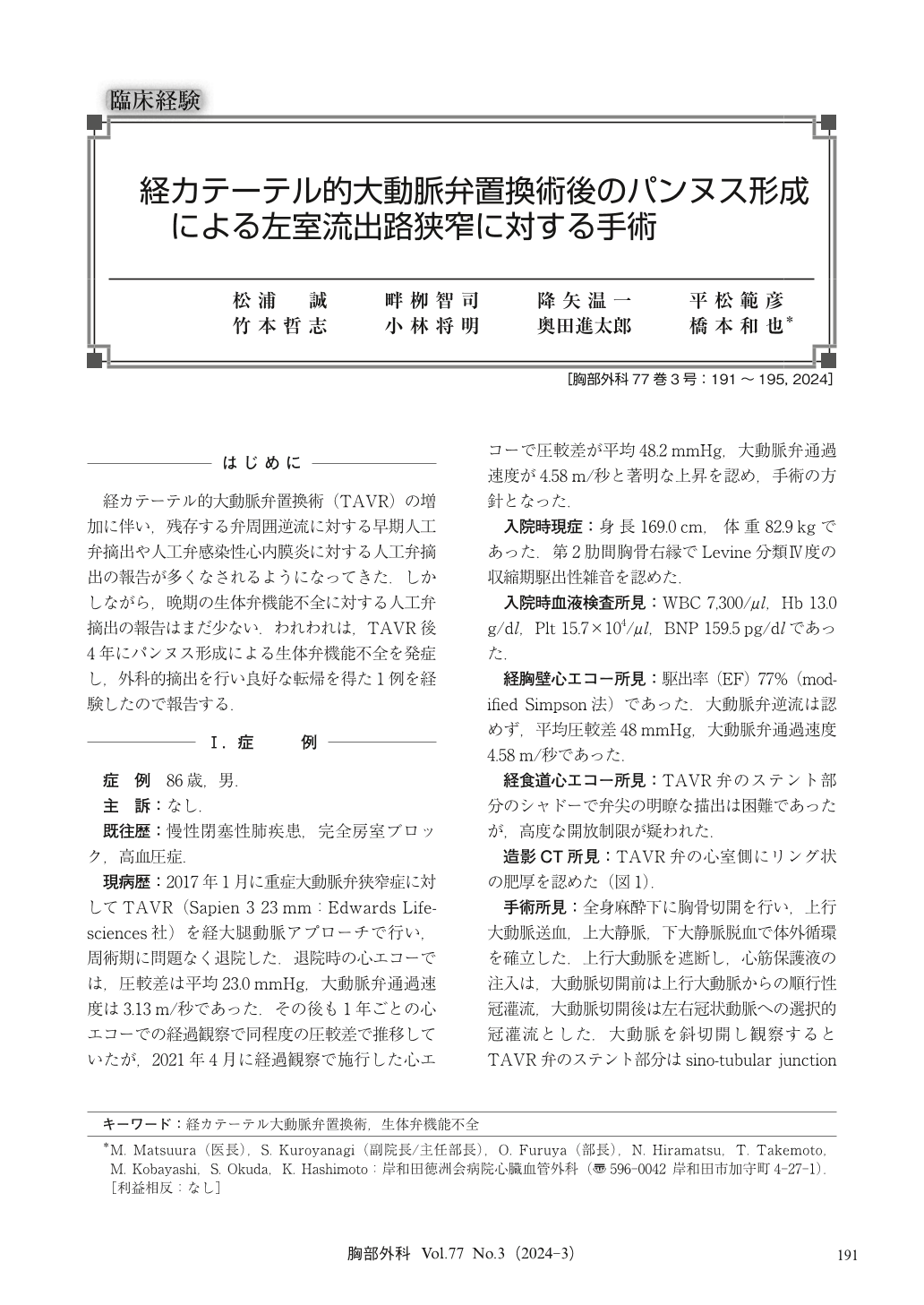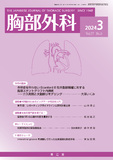Japanese
English
- 有料閲覧
- Abstract 文献概要
- 1ページ目 Look Inside
- 参考文献 Reference
経カテーテル的大動脈弁置換術(TAVR)の増加に伴い,残存する弁周囲逆流に対する早期人工弁摘出や人工弁感染性心内膜炎に対する人工弁摘出の報告が多くなされるようになってきた.しかしながら,晩期の生体弁機能不全に対する人工弁摘出の報告はまだ少ない.われわれは,TAVR後4年にパンヌス形成による生体弁機能不全を発症し,外科的摘出を行い良好な転帰を得た1例を経験したので報告する.
We experienced a case of surgical aortic valve re-replacement due to structural valve deterioration caused by pannus formation 4 years after transcatheter aortic valve replacement (TAVR). The patient underwent surgery because the mean transvalvular pressure gradient increased to 48 mmHg on echocardiography. Contrast-enhanced computed tomography (CT) was useful for predicting the site of adhesion to surrounding tissue preoperatively and exploring the presence of the pannus. Intraoperative findings showed the TAVR valve was covered with neointima except around the origins of the left and right coronary arteries and was firmly adhered to the surrounding tissues. As residual pannus was present in the subvalvular tissues, it was carefully removed. The explanted TAVR valve functioned well with good opening and closure. The postoperative course was uneventful. Pannus formation can result from mechanical stress. TAVR valves put significantly greater stress on the left ventricular outflow tract than surgical valves and may be more likely to cause pannus formation.

© Nankodo Co., Ltd., 2024


